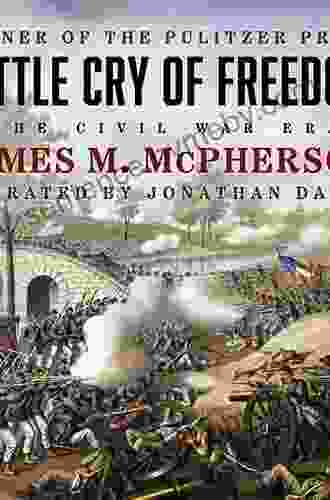The Birth and Growth of Manhattan Skyscrapers: A Journey to the Heavens

Manhattan's skyscrapers are an iconic part of the New York City skyline, and they have played a major role in shaping the city's identity. But how did these towering giants come to be? And what factors have contributed to their continued growth?
In this article, we will explore the fascinating history of Manhattan's skyscrapers, from their humble beginnings to their current status as some of the tallest buildings in the world. We will examine the architectural innovations that have made these buildings possible, and we will discuss the social and economic factors that have driven their development.
4.6 out of 5
| Language | : | English |
| File size | : | 60495 KB |
| Text-to-Speech | : | Enabled |
| Screen Reader | : | Supported |
| Enhanced typesetting | : | Enabled |
| Word Wise | : | Enabled |
| Print length | : | 455 pages |
| Lending | : | Enabled |
The Early Years
The first skyscrapers were built in Chicago in the 1880s. These early buildings were typically 10-15 stories tall, and they were constructed using a combination of iron and steel. The Home Insurance Building, completed in 1885, is generally considered to be the first skyscraper.
The construction of skyscrapers quickly spread to other cities, including New York City. The first skyscraper in New York City was the Tower Building, completed in 1889. The Tower Building was 11 stories tall, and it was constructed using a steel frame. The steel frame allowed for the construction of taller buildings, and it quickly became the standard for skyscraper construction.
The Rise of the Skyscraper
In the early 20th century, the skyscraper became a symbol of American progress and prosperity. The construction of skyscrapers boomed, and by the 1930s, New York City was home to some of the tallest buildings in the world. The Empire State Building, completed in 1931, was the tallest building in the world for over 40 years.
The construction of skyscrapers was driven by a number of factors, including the need for more office space, the desire for prestige, and the development of new technologies. The invention of the elevator made it possible to build taller buildings, and the development of new materials, such as reinforced concrete, made skyscrapers more economical to construct.
The Art Deco Era
The Art Deco era, which lasted from the 1920s to the 1940s, was a period of great architectural innovation. Many of the skyscrapers built during this period featured Art Deco design elements, such as geometric shapes, stepped setbacks, and decorative details. The Chrysler Building, completed in 1930, is one of the most iconic examples of Art Deco architecture.
The Art Deco era came to an end with the Great Depression, which caused a decline in construction. However, the skyscrapers built during this period continue to be admired for their beauty and their architectural significance.
The Post-World War II Era
After World War II, the construction of skyscrapers resumed with a vengeance. The post-war era saw the development of new technologies and materials, which made it possible to build even taller buildings. The World Trade Center, completed in 1973, was the tallest building in the world for over 20 years.
The construction of skyscrapers continues to be a major part of New York City's economy. In recent years, there has been a trend towards building supertall skyscrapers, which are over 1,000 feet tall. One World Trade Center, completed in 2014, is the tallest building in the United States and the sixth tallest building in the world.
The Future of Manhattan Skyscrapers
The future of Manhattan skyscrapers is bright. New technologies and materials are making it possible to build even taller and more sustainable buildings. The city's population is growing, and there is a continued demand for office space and luxury apartments. As a result, we can expect to see even more skyscrapers being built in Manhattan in the years to come.
Manhattan's skyscrapers are an iconic part of the city's skyline, and they have played a major role in shaping its identity. These towering giants are a testament to the ingenuity and creativity of human beings. They are a symbol of American progress and prosperity, and they continue to inspire awe and admiration.
4.6 out of 5
| Language | : | English |
| File size | : | 60495 KB |
| Text-to-Speech | : | Enabled |
| Screen Reader | : | Supported |
| Enhanced typesetting | : | Enabled |
| Word Wise | : | Enabled |
| Print length | : | 455 pages |
| Lending | : | Enabled |
Do you want to contribute by writing guest posts on this blog?
Please contact us and send us a resume of previous articles that you have written.
 Book
Book Novel
Novel Page
Page Chapter
Chapter Text
Text Story
Story Genre
Genre Reader
Reader Library
Library Paperback
Paperback E-book
E-book Magazine
Magazine Newspaper
Newspaper Paragraph
Paragraph Sentence
Sentence Bookmark
Bookmark Shelf
Shelf Glossary
Glossary Bibliography
Bibliography Foreword
Foreword Preface
Preface Synopsis
Synopsis Annotation
Annotation Footnote
Footnote Manuscript
Manuscript Scroll
Scroll Codex
Codex Tome
Tome Bestseller
Bestseller Classics
Classics Library card
Library card Narrative
Narrative Biography
Biography Autobiography
Autobiography Memoir
Memoir Reference
Reference Encyclopedia
Encyclopedia Jason Gregory
Jason Gregory Richard Spilsbury
Richard Spilsbury Jamie Maslin
Jamie Maslin James J Mckenna
James J Mckenna Jasmine Richards
Jasmine Richards Jamie Foxx
Jamie Foxx Karen Redrobe Beckman
Karen Redrobe Beckman Jane Adams
Jane Adams Jason Lester
Jason Lester Martin Edge
Martin Edge James Osiris Baldwin
James Osiris Baldwin Jay Calderin
Jay Calderin Kirby Arnold
Kirby Arnold Joan Baxter
Joan Baxter James R Andrews
James R Andrews Janet Wolanin Alexander
Janet Wolanin Alexander Michelle Misra
Michelle Misra Jean Christie Ashmore
Jean Christie Ashmore Professor Beaver
Professor Beaver Jaquavis Coleman
Jaquavis Coleman
Light bulbAdvertise smarter! Our strategic ad space ensures maximum exposure. Reserve your spot today!

 Gabriel Garcia MarquezAbraham Lincoln and the Antislavery Constitution: A Monumental Examination of...
Gabriel Garcia MarquezAbraham Lincoln and the Antislavery Constitution: A Monumental Examination of... John GrishamFollow ·15.4k
John GrishamFollow ·15.4k Seth HayesFollow ·4.7k
Seth HayesFollow ·4.7k Bret MitchellFollow ·3.7k
Bret MitchellFollow ·3.7k Brett SimmonsFollow ·16.1k
Brett SimmonsFollow ·16.1k Vince HayesFollow ·15.3k
Vince HayesFollow ·15.3k Yukio MishimaFollow ·19k
Yukio MishimaFollow ·19k Gregory WoodsFollow ·9.3k
Gregory WoodsFollow ·9.3k Adrien BlairFollow ·7.9k
Adrien BlairFollow ·7.9k

 Franklin Bell
Franklin BellHow Businesses Can Thrive In The New Global Neighborhoods
The world is becoming...

 Rob Foster
Rob FosterCard Manipulations Volume 1: A Masterclass in Deception...
Unveiling the...

 Enrique Blair
Enrique BlairUnveil the Secrets of Card Manipulation: Dive into "More...
Step into the captivating world...

 Jamal Blair
Jamal BlairComedy Fillers 200 Quips One Liners Jean Hugard
Unlock the Secrets of...

 Chase Simmons
Chase SimmonsUnlock Financial Independence: A Comprehensive Guide to...
In a world where financial security seems...

 Dion Reed
Dion ReedUnveiling Global Market Entry Strategies: A Comprehensive...
Global Market Entry Strategies:...
4.6 out of 5
| Language | : | English |
| File size | : | 60495 KB |
| Text-to-Speech | : | Enabled |
| Screen Reader | : | Supported |
| Enhanced typesetting | : | Enabled |
| Word Wise | : | Enabled |
| Print length | : | 455 pages |
| Lending | : | Enabled |








